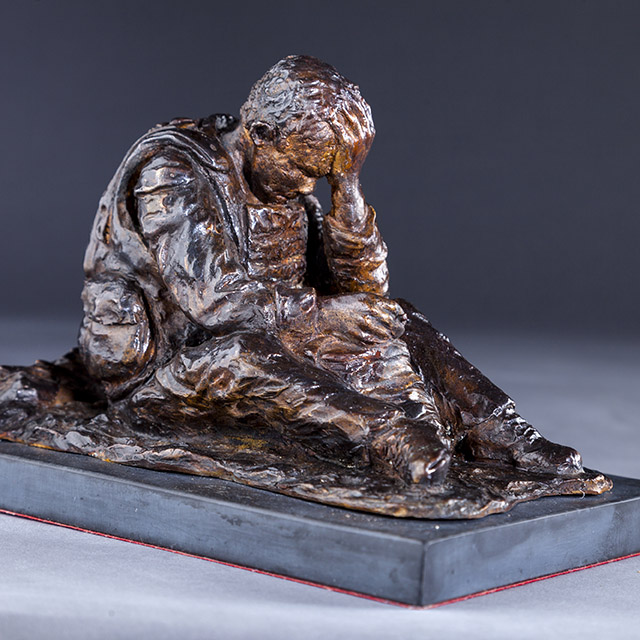
Sitting Soldier
In 2009, her younger son – a soldier in the British army – was severely wounded after he stepped on a homemade bomb in the Afghan province of Helmand. Her bronze military sculptures are a consequence of this.
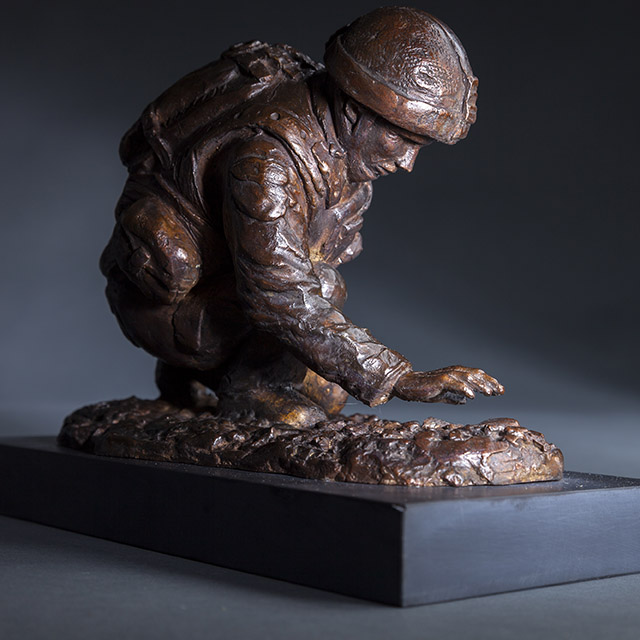
Bomb Disposal
In 2009, her younger son – a soldier in the British army – was severely wounded after he stepped on a homemade bomb in the Afghan province of Helmand. Her bronze military sculptures are a consequence of this.
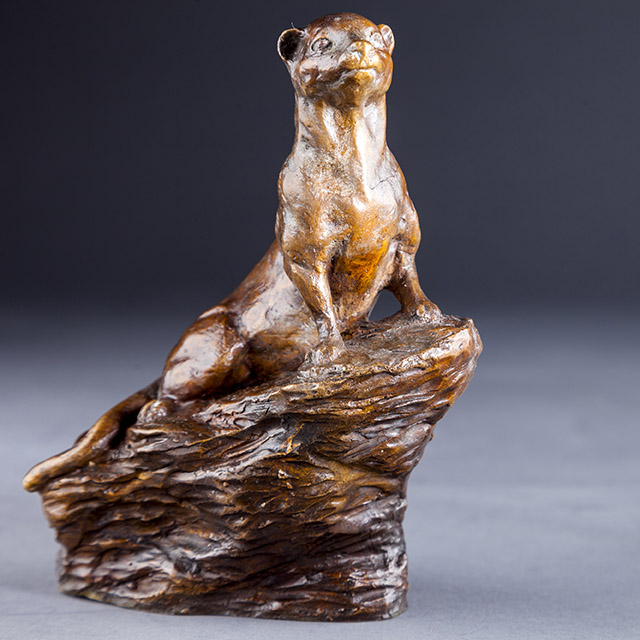
Dwarf Mongoose
The dwarf mongoose is primarily found in dry grassland, open forests, and bush land. It is especially common in areas with many termite mounds, their favorite sleeping place. The species avoids dense forests and deserts. The common dwarf mongoose can also be found in the surroundings of settlements, and can become quite tame.
A mutualistic relationship has evolved between dwarf mongooses and hornbills, in which hornbills seek out the mongooses in order for the two species to forage together, and to warn each other of nearby raptors and other predators
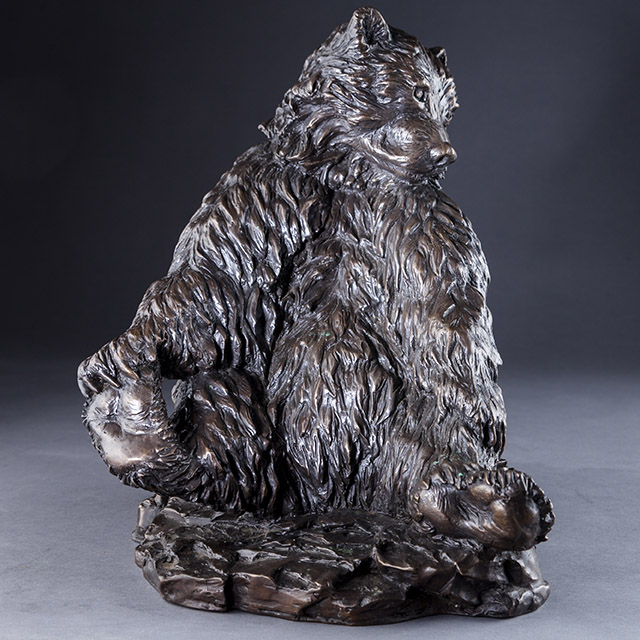
Brown Bear
The brown bear’s principal range includes parts of Russia, Central Asia, China, Canada, the United States, Scandinavia and the Carpathian region, especially Romania, Anatolia and the Caucasus. The brown bear is recognized as a national and state animal in several European countries. It is one of the largest living terrestrial members bear family, rivaled in size only by its closest relative, the polar bear.
Brown bears are often not fully brown. They have long, thick fur, with a moderately long mane at the back of the neck which varies somewhat across the types. In India, brown bears can be reddish with silver-tipped hairs, while in China brown bears are bicolored. The winter fur is very thick and long, especially in northern subspecies, and can reach 11 to 12 centimetres (4 to 5 in) at the withers.
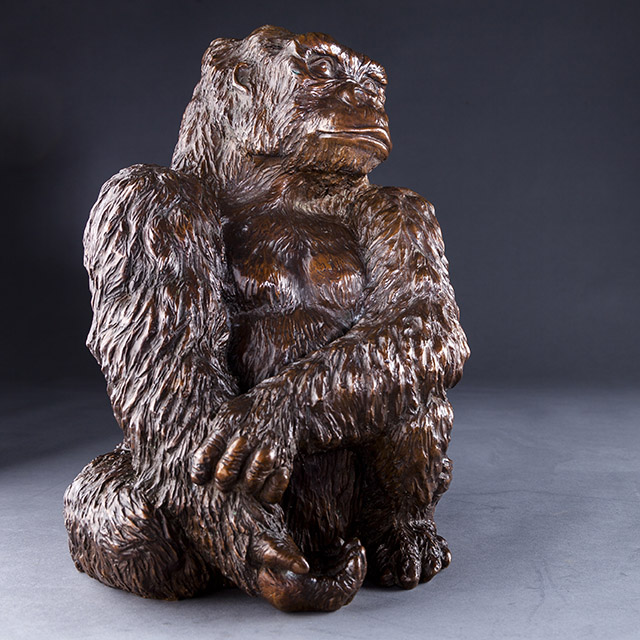
Gorilla
Gorillas are considered highly intelligent. A few individuals in captivity, such as Koko, have been taught a subset of sign language. Like the other great apes, gorillas can laugh, grieve, have “rich emotional lives”, develop strong family bonds, make and use tools, and think about the past and future. They have been shown to have cultures in different areas revolving around different methods of food preparation, and will show individual colour preferences.
Between the species, and even within the species, gorillas live in a variety of habitats and elevations. Gorilla habitat ranges from montane forests to swamps. Eastern gorillas inhabit montane and submontane forests. They are the largest living primates. The DNA of gorillas is highly similar to that of humans, from 95 to 99% depending on what is included, and they are the next closest living relatives to humans after the chimpanzees and bonobos.
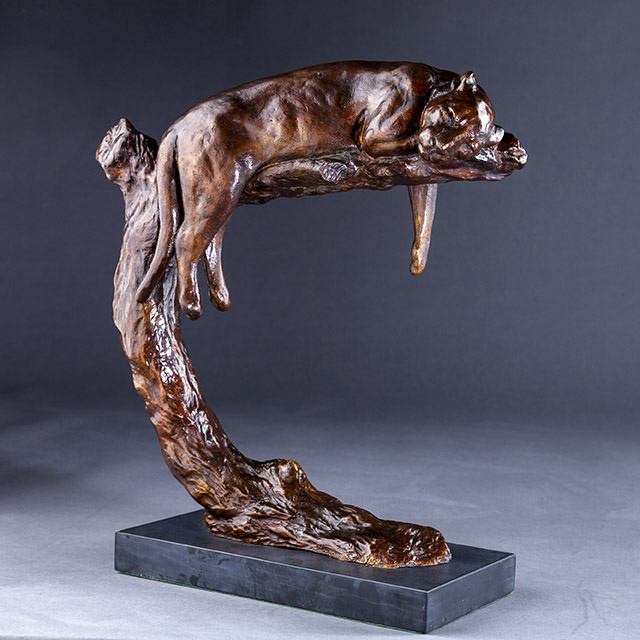
Sleeping Leopard
The Leopard has the largest distribution of all wild cats, occurring widely in Africa and Asia as well as the Caucasus. Compared to other wild cats, the leopard has relatively short legs and a long body with a large skull. The leopard is distinguished by its well-camouflaged fur, opportunistic hunting behaviour, broad diet, strength, and its ability to adapt to a variety of habitats ranging from rainforest to steppe, including arid and montane areas. It can run at speeds of up to 58 kilometres per hour (36 mph).
Leopards have been known to humans throughout history, and have featured in the art, mythology, and folklore of many countries where they have historically occurred, such as ancient Greece, Persia, and Rome, as well as some where they have not existed for several millennia, such as England
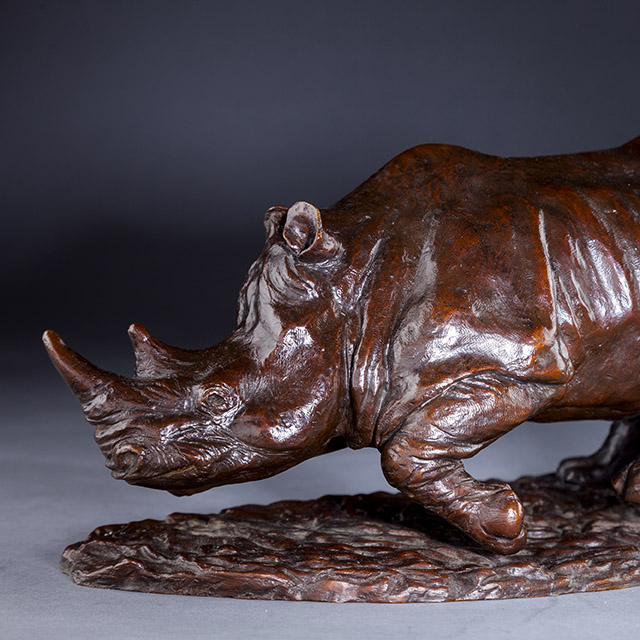
Rhinoceros
Members of the rhinoceros family are some of the largest remaining megafauna, with all species able to reach or exceed one tonne in weight. They have a herbivorous diet, one or two horns, and a thick (1.5–5 cm) protective skin formed from layers of collagen positioned in a lattice structure.
There are legends about rhinoceroses stamping out fire in Burma, India, and Malaysia. The mythical rhinoceros has a special name in Malay, badak api, wherein badak means rhinoceros, and api means fire. The animal would come when a fire was lit in the forest and stamp it out.
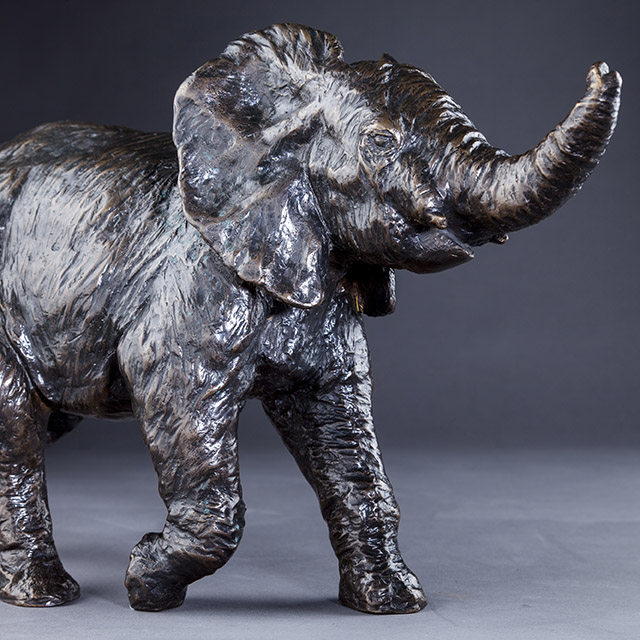
Elephant Calf
The Elephant is often regarded as one of the world’s most intelligent and sociable animals. Widely believed to understand emotion Elephants understand basic communication and have been found to play with one another. In many cultures, elephants represent strength, power, wisdom, longevity, stamina, leadership, sociability, nurturance and loyalty.
Elephants are scattered throughout sub-Saharan Africa, South Asia, and Southeast Asia. Unforunately African elephants are listed as vulnerable by the International Union for Conservation of Nature (IUCN) while the Asian elephant is classed as endangered.
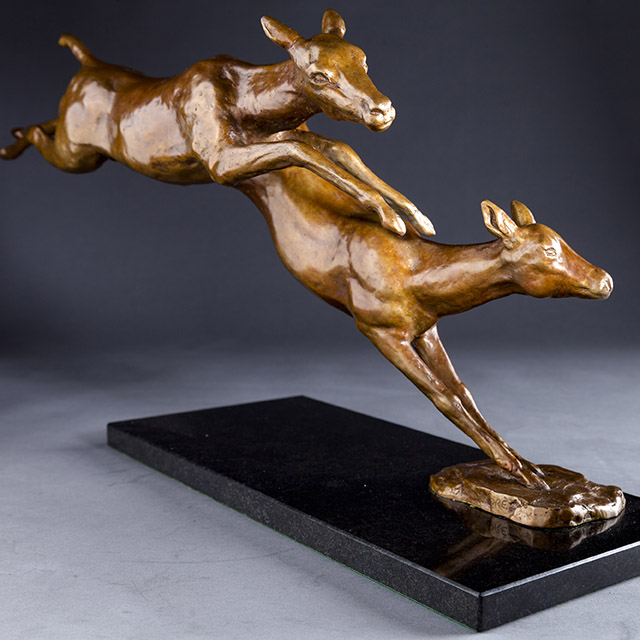
Leaping Impalas
The Impala is a medium-sized antelope found in eastern and southern Africa known for it’s characteristic bounding leaps.
The historical range of the impala – spanning across southern and eastern Africa – has remained intact to a great extent, although it has disappeared from a few places. The range extends from central and southern Kenya and northeastern Uganda in the east to northern KwaZulu-Natal in the south, and westward up to Namibia and southern Angola.
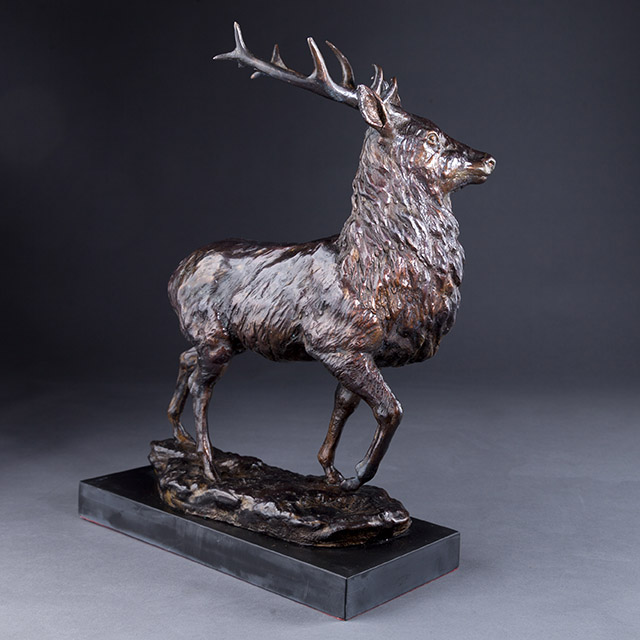
Highland Stag
The Highland Stag is a subspecies of Red Deer native to Great Britain. This deer is slightly smaller than other Western European red deer. In summer, the coat is lighter in colour with a distinct border to the lighter patch on the rump. The rest of the colour is dark reddish brown with a greyer face and neck. The legs are blackish brown. In winter the animal grows long hair on the neck. The brow and the bez tines of the antler are usually close together and at a distance above the burr.
This deer thrives in the Highlands and Islands of Scotland and in parts of England such as Westmorland, Devon, Somerset, Wiltshire and the New Forest. It is also found in County Kerry and Donegal in Ireland. However, most of the red deer kept in parks in the British Isles are derived from the larger subspecies brought from the European mainland, the Western European Red Deer.
Although mostly found in the north of Scotland, there are reports of deer being spotted in the Borders.
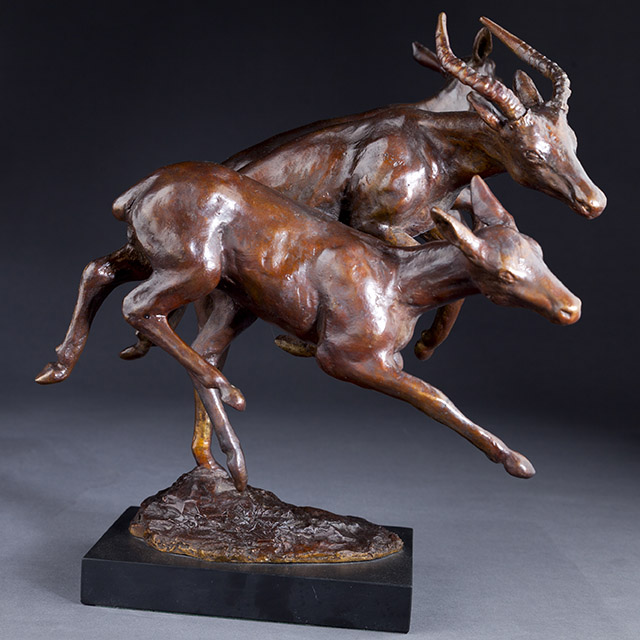
Impala in Flight
The Impala is a medium-sized antelope found in eastern and southern Africa known for it’s characteristic bounding leaps.
The historical range of the impala – spanning across southern and eastern Africa – has remained intact to a great extent, although it has disappeared from a few places. The range extends from central and southern Kenya and northeastern Uganda in the east to northern KwaZulu-Natal in the south, and westward up to Namibia and southern Angola.
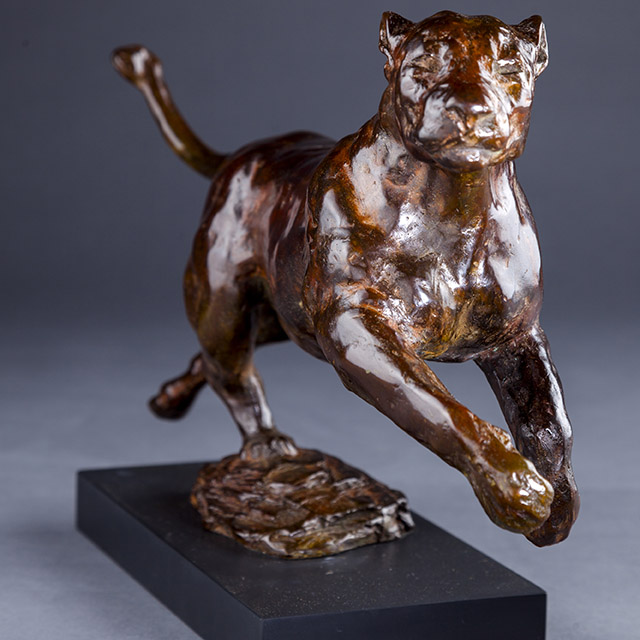
Lioness
One of the most widely recognised animal symbols in human culture, the lion has been extensively depicted in various artforms, on national flags, and in contemporary films and literature. It appeared as a symbol for strength and nobility in cultures across Europe, Asia and Africa. The lion has been depicted as “king of the jungle” and “king of beasts”, and thus became a popular symbol for royalty and stateliness.
The lion prefers grassy plains and savannahs, scrub bordering rivers and open woodlands with bushes. It is absent from rainforest and rarely enters closed forest. In Eurasia, the lion once ranged from Greece to India; Herodotus reported that lions had been common in Greece in 480 BC but today it has been reduced to fragmented populations in Sub-Saharan Africa and one critically endangered population in western India.